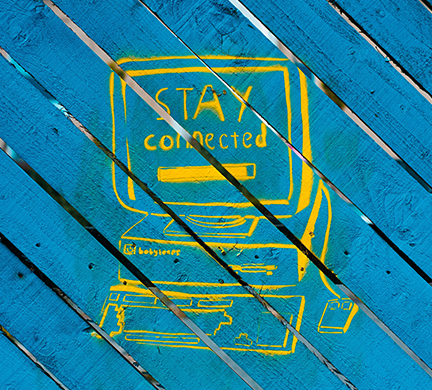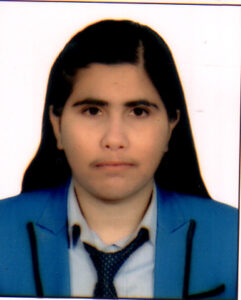Written by Jalasa Sapkota
After the post pandemic period, our lives have revolved around two different worlds: one physical world, next virtual world. Our lives have become way simpler and more complex at the same time while navigating the world through internet. Gone are those days when we used the internet for only conversational purposes. Today it has become much wider and functional. During the pandemic period, we have become accustomed to conducting our regular classes, organizing national and international conferences, carrying out day to day official works, enjoying online shopping and food delivery, and implementing banking and financial transactions through virtual platforms. But the question here lies, while enjoying the luxury and advantages of digital platforms, how often have we realize about whether these services are accessible for all the users? Are we mindful of inclusive digital design while developing our contents? Do we know the concept of inclusive design?
Let me elaborate the challenge of inaccessible digital platforms for people with visual impairment by addressing my own experience.
Regarding accessible social media platforms, I have my fair share of experience with messaging app – Viber. I still re-call that moment when I was doing post-graduate virtually, we had a several Viber groups for research works. We were given two days for topic finalization for the research works. One of our group members made group call in the evening for the same. Unfortunately, I was alone at the home I got Viber call and I was not able to accept the call because Viber is inaccessible for visually impaired people in terms of making and receiving calls. The option of accepting or declining calls is not supported by our screen-reader and this impediment is not addressed yet. Coming back, the group call continued for more than 4 times to include me however, inaccessible Viber excluded me from attending important group discussion.
Understanding accessibility and inclusive design
With so many people using social media and relying on it as a key source of information, it’s important to make sure that everyone can navigate it, including people with hearing, sight or mobility impairment. Persons with disabilities including those who have long-term physical, mental, intellectual or sensory impairments might have difficulty in full and effective participation in society because of various barriers impacting their participation. (Article 1, CONVENTION ON THE RIGHTS OF PERSONS WITH DISABILITIES.) People with disabilities often use assistive technology to access digital content in their preferred format. Examples include: Screen readers or magnifiers, closed captioning, voice command and so forth. For this purpose, recognizing the importance of accessibility to the physical, social, information and communication sectors is the need of the hour. For persons living with disabilities, to freely access the content of digital platforms requires inclusive and universal designing.
So, what is accessible communication? Universal and inclusive design?
According to the article 2 of Convention on the Rights of Persons with Disabilities, “Accessible Communication” includes languages, display of text, braille, tactile communication, large print, accessible multimedia as well as written, audio, plain-language, human-reader and augmentative and alternative modes, means and formats of communication, including accessible information and communication technology. Similarly, “Universal Design” means the design of products, environments, programs and services to be usable by all people, to the greatest extent possible, without the need for adaptation or specialized design. “Universal design” shall not exclude assistive devices for particular groups of persons with disabilities where this is needed. Likewise, inclusive design considers the full range of human diversity with respect to ability, language, culture, gender, age, and other forms of human differences. It empowers designers to create products whose contents serve as many people as possible. In practice, it’s a shift away from the one-dimensional approach that centers around certain users. Inclusive design starts by identifying the most rare or extreme needs of all individual groups. However, for the person living with disabilities, to take the complete edge of the virtual world is still a far cry. Because it lacks minimum accessibility guidelines which becomes a major impediment for those people to fully access all digital platforms.

Diving deeper into the problem
While diving deeper into how digital platforms has created further discrimination among the individuals with different needs, let’s have a glance in the case of person living with vision impairment: Messaging apps like Viber and Imo. Entertainment apps like Instagram and TikTok. Shopping apps like Daraz. Dating apps like Tinder. Various exercise related apps. Banking apps. All of these apps are developed without putting the accessibility needs of persons with disability at interest, which has excluded persons with disability to use these apps. To top it all, different governmental websites are yet not fully accessible to such people because of the complete ignorance of responsible apps developers regarding accessibility factors while designing their particular content.
In this modern era, where the world has witnessed phenomenal technological wonders and advancements, subjecting person living with disabilities with social stereotypes and stigma of not being a consumer/ content creator of digital media, and in turn excluding them from using digital means, is like committing another level of crime which takes away their liberty, clasping their dignity and independence. While we are discussing the distinction digital platforms have created among the individuals with different needs, it is equally important to concentrate our focus towards bridging those gaps in making those platforms accessible for all groups. In order to practically internalize this essence of inclusive digital platforms for all kind of people irrespective of their abilities in a sustainable run, it is essential to come one step forward to dismantle socially implanted and constructed perception that the basic necessity of shopping, traveling, economic transactions, entertainment and emotional expressions are not operative for certain individuals.
What could be done to address this issue?
For this sensitive issue, awareness alone is not enough, it requires well-coordinated multi-sectoral reforms and cooperation. For example: Developers need to take into consideration that accessibility is not just an add-on, it is a requirement. Similarly, stakeholders from government sectors must be mindful of accessibility factors while designing various governmental websites. Also when developers of digital platforms want to design applications or websites for that matter, from the initial phase and while releasing updates, they need to be engaging with people with disabilities to ensure that the app or website platform is going to be accessible. It is equally important to organize consultation among different stakeholders and people with disabilities on a regular basis, so that the issue of accessibility could be sensitized from first-hand experience of the community. Only then, developers can understand the need and work towards accessible content. On the other hand, integrating accessibility content in the academic curriculum of IT could also help to bridge the gap. Most importantly, our media should take initiative to sensitize this issue through numerous ways. Such as publishing articles on the importance of inclusive design, conducting interviews of people with special needs, through different pamphlets, and blogs and so forth. Furthermore, it should be considered that persons with disability aren’t just consumers of digital means, but can be at the decision-making table to shape our digital experiences.
Conclusion
In today’s world of inevitable digital services and dependence, it is more than necessary to understand, review, renew, and strive for an inclusive digital future. For this, if we need to internalize the fact that accessible digital platforms are not luxury but a need. With conscious effort into more inclusive digital world, we are slowly but gradually creating real inclusion and equality, hence making this virtual world accessible and approachable for all.
 I am Jalasa Sapkota, a visually challenged person. I am a general member at Prayatna Nepal. I have been actively involving as an inclusive digital rights activist.
I am Jalasa Sapkota, a visually challenged person. I am a general member at Prayatna Nepal. I have been actively involving as an inclusive digital rights activist.
